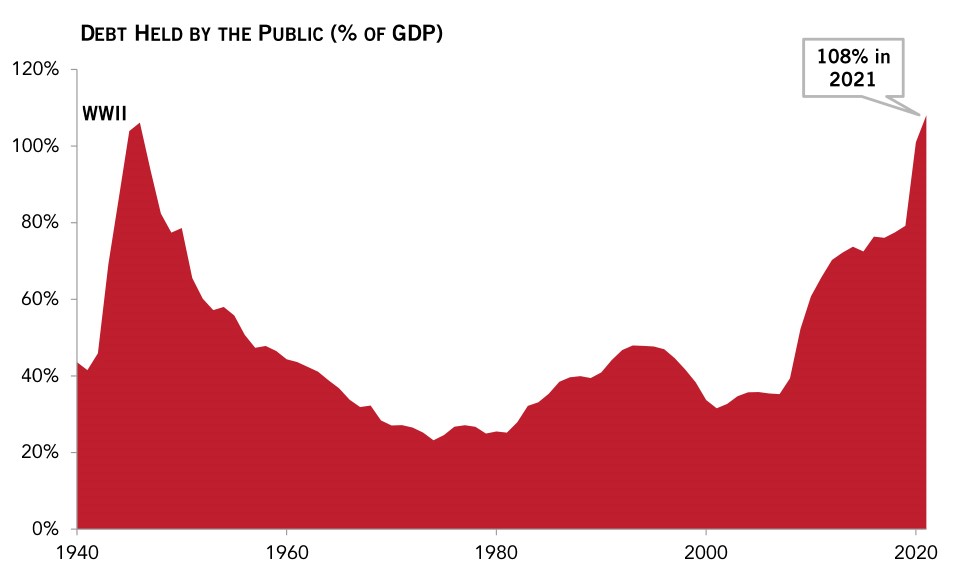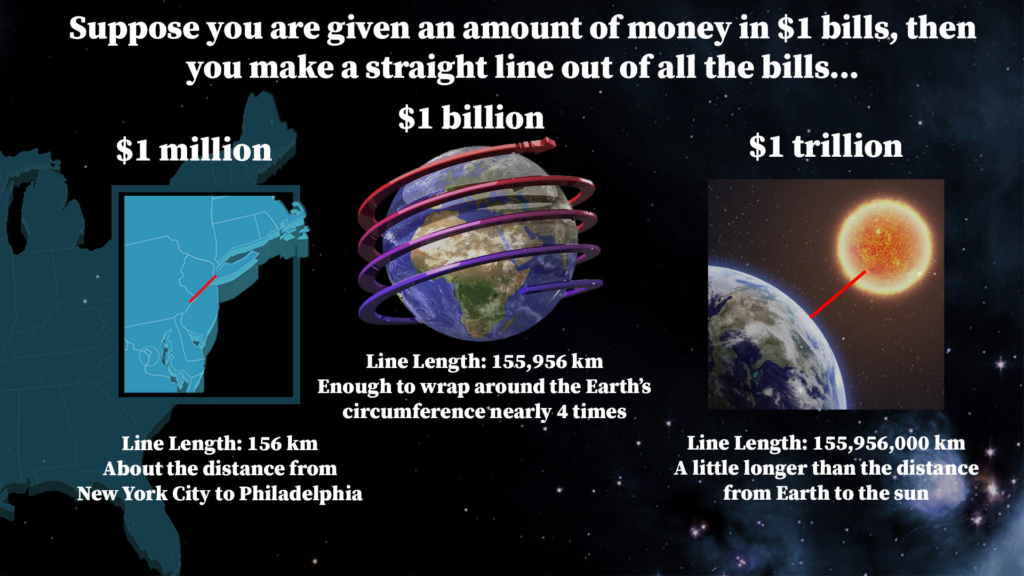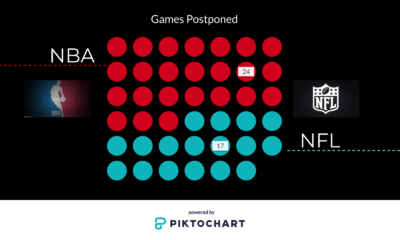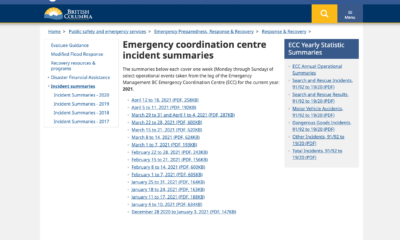News
Almost all Canadians have seen COVID-19 misinformation online, according to study

Statistics Canada released a study reporting 96% of Canadians have seen inaccurate, misleading or false COVID-19 information online
According to a new study released by Statistics Canada on Tuesday, almost all Canadians have seen COVID-19 misinformation online since the start of the pandemic.
The study revealed that over half of Canadians have shared COVID-19 information without knowing its accuracy, with just one in five Canadians reporting that they consistently verify information.
The World Health Organization (WHO) released a statement in September that said an “infodemic” has accompanied the COVID-19 pandemic. They describe this as an overabundance of true and false information, making it difficult for people to identify facts and reliable sources.
Melodie Song, a research collaborator at the Social Media Lab at Ryerson University, said that the issue with online information is the “lack of gatekeeping.”
“Traditionally, we’ve had journalists fact-check information before it is printed or broadcasted,” she said. However, with social media, that time is long gone. “Now, people can post anything,” Song said.
With the study revealing that 96 per cent of Canadians saw inaccurate, misleading or false COVID-19 information online, Song said that social media algorithms recognize individual’s searches and preferences and are likely to recommend more of the same content, regardless of its accuracy.
“So, if you’re trying to look into conspiracy stories, they’re likely to select those. Then you’re stuck in that rabbit hole, and you can’t get out of it because the information is passively being sent to them,” said Song.
The study also showed that Canadians 55-years and older were more likely to share COVID-19 information without checking its accuracy than those between the ages of 15 to 54-years-old.
Song said this is not surprising to hear as those who grew up with social media can understand that not all online information comes from reliable sources.
“What’s surprising to me is that there are no communication channels from the government to identify the misinformation that is floating around,” said Song. “It’s quite concerning, but it’s not surprising.”
News
Streaming platforms’ usage rise during the pandemic
As the COVID-19 pandemic’s restrictions continue, video streaming platforms have become a primary source of entertainment.
Over the last year, the number of worldwide subscriptions to these platforms rose to 1.1 billion, according to a report by Motion Picture Association. This was a 23 per cent increase from 2019.

Prior to the pandemic, first-year hospitality and tourism management student Kinneret Witty wasn’t subscribed to any streaming platform. Now, she uses streaming services almost everyday, consuming content mainly through Netflix and occasionally through Amazon Prime Video.
“At the start of the pandemic, I was coming back to Canada from a gap year overseas and had to quarantine by myself in my basement for two weeks,” Witty said. “[These streaming platforms] were pretty much one of the only ways for me to pass my time.”
Still at her home in Ontario due to the lockdown measures, Witty continues to use these platforms when she needs a break from her school work.
“There is a limited amount of things that I can do for a change of scenery so I wind up resorting back to Netflix or other platforms,” Witty said.
Source: Visual CapitalistThe largest video streaming platform in the world, Netflix began as a DVD-by-mail rental business in 1998.
Due to competition from other movie-downloading services and the growth of the internet, the company launched its online platform in 2007, initially buying licensing rights to movies and television shows and gradually creating original content.
With Netflix being one of the main video streaming platforms used during the pandemic, try the quiz below to see how well you know your Netflix shows, particularly those that were released in the past year.
Disney Plus recently joined the ranks of Netflix and Amazon Prime Video during the pandemic, amassing over a 100 million subscribers in only 16 months since its launch in November 2019.
Disney Plus’s strength lies in its content, Business of Apps reports. Home to childhood favourite Disney movies and television shows, franchises like Star Wars as well as Marvel and Pixar productions, the introduction of this platform has led to the bulk migration of content from other streaming platforms, primarily Netflix.
Disney Plus is now particularly popular in young households, with many kids no longer physically attending school.
Sources: Statistica, Disney+However, while online streaming platforms have become the most dominant form of entertainment during the pandemic, some people still prefer the authentic cinema experience.
“While I believe that movie streaming services are great and allow people to have access to a ton of movies, I also believe that watching a movie in a theater feels more special,” Junior Joseph Dean told The Loyalist.
“Movie theaters make the movie-watching experience more memorable–I don’t always feel the same way when I am at home watching Netflix.”
News
Ford Government’s controversial use of MZOs in Duffins Creek development
Ontario Provincial Government invokes special power in construction project to fast-track plan to build over important wetland
Eco Justice lawyer taking Ford government to court over Duffins Creek development plan says Ontario should get rid of Minister’s Zoning Orders.
Laura Bowman, a senior member of Eco Justice who is handling the case against the Ontario government said, “I think we need to get rid of the Minister’s Zoning Order power in the Planning Act. Long term it has to go or be severely constrained and confined to very specific kinds of situations.”
…It was so extraordinary, [and it] has been thrown under the table in the last couple of years with numerous Zoning Orders being made for other reasons and in other contexts. I think we should think seriously about getting rid of [this power] altogether, because of its potential to be abused,” she said
Bowman and Eco Justice, along with Environmental Defence and Ontario Nature took the Ontario Provincial Government to court over their use of the MZO power in a development plan in Pickering, Ont. that included significant wetland, Duffins Creek.
According to an article by the Toronto Star, the Ford government has used the MZO power 43 times since coming into office in June 2018. This compared to the previous government, led by former Liberal Premier Kathleen Wynne, who only used the power three times during her term prior according to Environmental Defence.
The Ontario Environment Program Manager with Environmental Defence, Phil Pothen, said, “the economic development can happen on many sites in the GTA. There’s no reason for them to [develop] the wetlands, when there are other development sites available.”
He said, “the only person who really had a stake in [having] it be there were the owners of that particular land –who knew they had hit a jackpot if Amazon chose that site. There was another perfectly good site available. Amazon, once the pressure was up, said, ‘that’s fine, we don’t need to use that site, we’ll go somewhere else.’ They didn’t say, ‘we’re not going to do this project.’”
According to a Natural Sciences Report by LGL Limited, these animals have been documented in Duffins Creek from 1995 to 2002.
Originally, the Pickering City Council had requested the use of the MZO. But, according to an article by TVO, on March 22 the Council asked the Ministry of Municipal Affairs and Affairs and Housing to rescind the part of the MZO that would include Duffins Creek.
As of April 12, Bowman said they are still waiting for the government to officially act on this request and are waiting to see the next move in the case.
Ontario Nature, Pickering-Uxbridge mpp, Peter Bethlenfalvy, and the Ontario Ministry of Municipal Affairs and Housing all declined a request for comment.
News
What happens to the United States’ Debt Post-COVID-19?

The federal debt is nearing $28 trillion, according to the US Debt Clock
The United States’ federal debt has been growing dramatically for decades and is poised to surpass the country’s GDP this year. The debt’s growth has been accelerating, and the COVID-19 pandemic brought this acceleration to a new level.
The COVID-19 pandemic has had a massive impact on the national debt, and it’s not over. Biden’s administration has plans for another COVID-19-relief bill, with a $1.9 trillion price tag.
It can be hard to visualize the difference between large numbers – like $1 billion compared to $1 trillion. Think about it this way…

The party in power does not seem to have significant impact on the debt. The last president to leave the White House with a smaller debt than when he entered was Calvin Coolidge, in 1929.
Lowering the debt is possible, but how would one go about doing it today? There are two major options – raise taxes or cut spending.
The newest COVID-19 relief bill can provide some insight into the federal governments tendencies when it comes to spending.
Referring to the bill as something like the ‘The COVID Relief Bill’ is misleading in itself. Only two out of 32 sections are directly related to the coronavirus.
Think of it like this: someone offers you a bowl of M&Ms, and then gives you a bowl of trail mix instead. Yes, there are M&Ms in the bowl, and most people would agree that they are the most important component, but they make up far too small a percentage to call the whole thing ‘M&Ms’.
The bill included many unrelated expenses, which contributed to its colossal length.
Whether or not each item is a wise use of money is irrelevant. Putting multiple unrelated bills under the ‘COVID-19 Relief Package’ name ends up being misleading and expensive.
-

 Lifestyle3 years ago
Lifestyle3 years ago‘I love you so much it hurts’: Domestic Violence Awareness & Resources
-

 Uncategorized3 years ago
Uncategorized3 years agoThe NBA’s fight against COVID-19
-

 Uncategorized3 years ago
Uncategorized3 years agoThe Raptors’ NBA title window is closed
-

 Sports3 years ago
Sports3 years agoFred VanVleet drops 54 points, breaks Raptors franchise record
-

 Uncategorized3 years ago
Uncategorized3 years agoA simple Python web scraping guide for journalists
-

 Uncategorized3 years ago
Uncategorized3 years agoNorth Shore Rescue sees a busy winter season with a record-breaking 2020
-

 Uncategorized3 years ago
Uncategorized3 years agoOntario is currently in shambles with COVID-19
-

 News3 years ago
News3 years agoSuper Bowl LV breaks records
